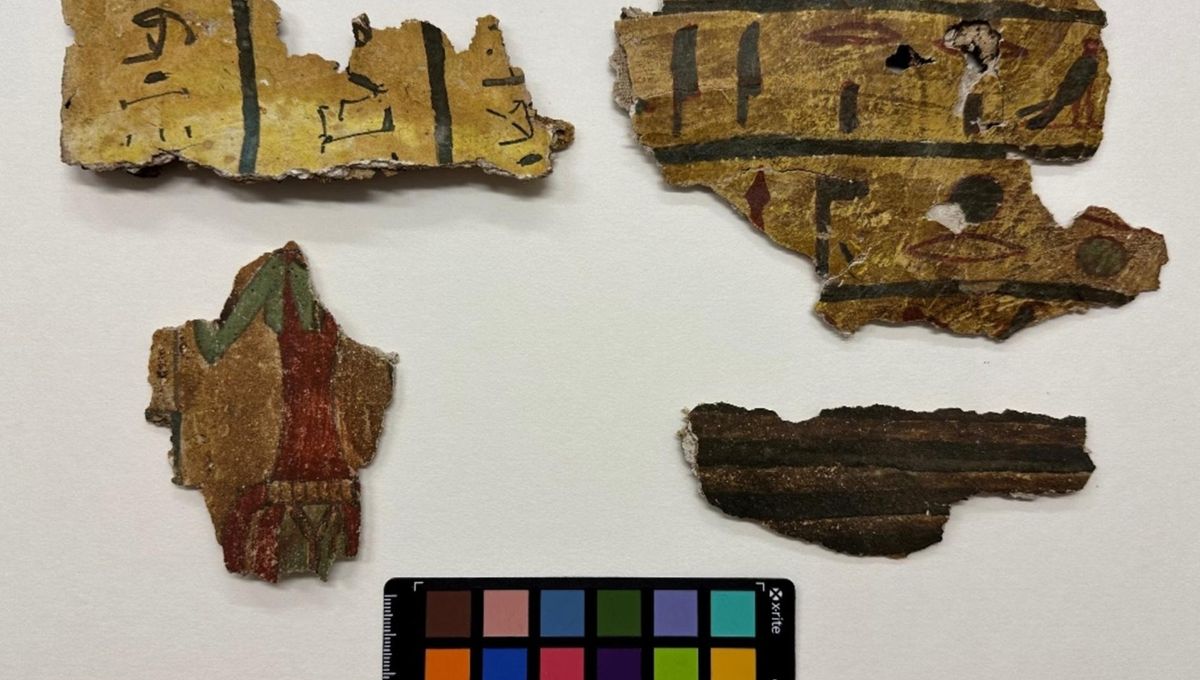
Around 2,700 years ago in ancient Egypt, a man named Pakepu held the title of “water pourer on the west of Thebes”, responsible for managing the funerary cult in the legendary city. Upon his own death, Pakepu was placed inside a set of wooden coffins, sealed with a selection of pink and white “pastes” that have now been analyzed for the first time.
ADVERTISEMENT GO AD FREE
Currently housed in the Fitzwilliam Museum at the University of Cambridge, Pakepu’s eternal container consists of two coffins, one placed inside the other, labeled the inner and intermediate coffins. According to the museum, the water pourer’s duties included performing funerary rites and looking after tombs.
Analyzing Pakepu’s coffins in a new study, a team of researchers has found that the pastes varied in their composition and quality, and were probably produced by multiple tradespeople from different workshops. Specifically, they found that the “pink pastes” were used to fill gaps in the wooden structures, while the “white pastes” were applied to create a preparatory layer for painting the coffins.
Another type of white paste was also found only in the inner coffin and was used in the creation of a substance resembling cartonnage – a multi-layered material consisting of sheets of linen or papyrus bound with plaster, which was molded like papier-mâché to create funerary masks and mummy cases.
Numerous previous studies have analyzed the composition of pastes and mortars used in ancient Egyptian construction. Some of these substances were found to be genuine plaster – which consists of heated lime and gypsum – while others were made from mud, calcium carbonate, or other similar preparations.
However, the study authors point out that very little attention has so far been paid to pastes on coffins and other artifacts, leaving gaps in our understanding of how these sealants were created. Examining the various plaster-like substances on Pakepu’s coffins, the researchers found that all contained the mineral calcite as their bulk component.
To create the white pastes, limestone was ground up into a fine powder and mixed with an organic binder. However, only the purest calcite was used for manufacturing the cartonnage-like material within the inner coffin, while lower-grade calcite containing more impurities was selected for the white paste of the intermediate coffin.
ADVERTISEMENT GO AD FREE
“It appears that greater care was given to selecting and processing the geological material employed on the pseudo-cartonnage of the inner coffin, the structure closest to the deceased body, than those of the intermediate coffin,” write the study authors. “The differences in quality of the pastes revealed through this study add to the understanding of the purposes of each coffin, suggesting that the inner coffin served, like an earlier cartonnage mummy case, as the outermost layer of the mummy itself,” they add.
As for the pink pastes, the researchers found that they obtained their hue thanks to their higher iron content, and that the calcite used was once again purer on the inner coffin than the intermediate one. “As this paste was predominantly used as a filler for gaps and not visible from the surface, appearance and texture may have been of less importance, while the presence of larger mineral grains may have helped prevent shrinkage during drying and thus facilitate structural stability,” they write.
Overall, the fact that the various substances appear to vary so wildly in their composition and quality suggests that while there was clearly a strong tradition in the use of calcite-based pastes in ancient Egypt, different workers had different recipes for creating these plasters. Moreover, the discovery of so many distinct pastes on Pakepu’s coffins indicates that his tomb was probably crafted by numerous technicians, each working according to their own preferred methods.
The study is published in the Journal of Archaeological Science: Reports.
Source Link: Pink And White "Pastes" Sealing Ancient Egyptian Cult Worker's Coffins Analyzed For First Time